Nothing says Christmas in Kolkata more than the Christmas cake. With places like Nahoum’s and Flury’s overflowing with cakes and crowds, the plum cake has a much more ubiquitous presence here as compared to other Western seasonal favourites like roast dinner and eggnog. This Christmas, we will take a good look at this seasonal treat which we have embraced and made our own, with forays into science, history, recipes and a lot more.
Before dealing with the Christmas cake however, it’s best to take a step back and examine a simpler cake, to understand how the ingredients work together in glorious alchemy to yield the final product. This cake is incredibly simple, the perfect prototype to help delve deep into cake anatomy and physiology. The French call it “quatre quarts” meaning four quarters, since it comprises a pound each of flour, butter, eggs and sugar. It’s the good old pound cake.
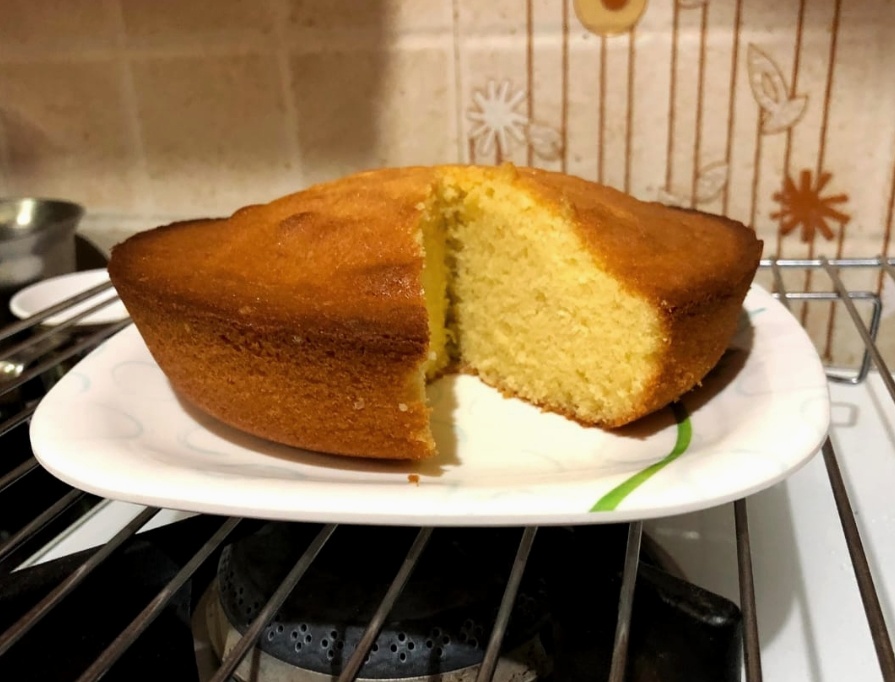
You could divide cake ingredients into the simple categories of dry, wet and leaveners, but I prefer the categories as described by Alton Brown of Good Eats. According to Alton, here are five primary varieties of ingredients in a cake batter, four of which come in antagonistic pairs. There’s the tougheners and tenderizers, and the driers and moisteners. The fifth category includes the flavouring agents, and since they contribute little to the actual structure of the cake, we will address it later.

Let’s see how the four ingredients of the pound cake fit into Alton’s four-pronged cake theory. Flour comprises starch and protein. The long polysaccharide chains of glucose that make up starch play the role of driers. The protein in flour is gluten. It comprises two components, glutenin and gliadin. In the presence of moisture and with adequate kneading, the gluten forms long chains resulting in a stretchy dough and consequently, a chewy baked good. This is precisely what happens in a bread dough, where the dough is mixed with water and yeast and kneaded for a sufficient period of time, resulting in gluten development.
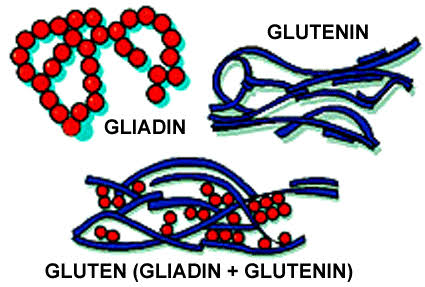
In a shortcrust dough, as in a sugar cookie, the flour and fat are rubbed together, so that the fat coats the grains of flour, preventing them from forming long strands when the water is added. Gluten development is also achieved by not overworking the dough; once the components coalesce together, that is it. As a result, the texture is crumblier, and hence more tender. A cake on the other hand, takes the middle ground, resulting in a texture that isn’t too chewy like bread nor too crumbly like a cookie.

All flours are not the same. Bread flours have a high gluten content and is ideal for breadmaking. Cake flour, milled from low protein winter wheat has low gluten precursors to begin with. Also, cake flour has much finer grains which needs less stirring for incorporation into a batter and hence, less gluten production. Using cake flours produces tender cakes and cookies but since they’re not easily available in India, it is best to stick to plain old all-purpose flour which lies somewhere between the two extremes.
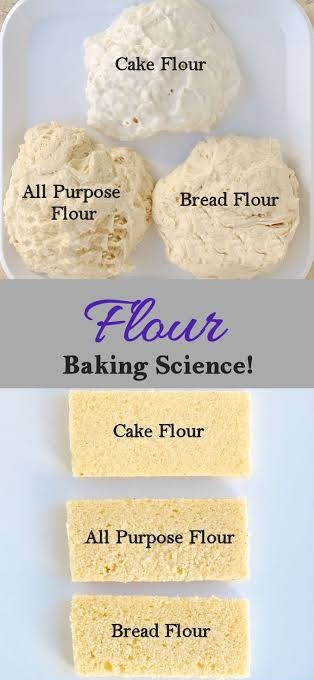
Moving on to eggs. Eggs have a white and a yolk, and the proteins in egg white provide structure, although its role is secondary to gluten. Yolks have a large amount of fat which contributes to richness and more importantly, a gorgeous yellow colour. Using more yolks therefore produces a cake with a brighter yellow colour and with a texture that is more tender and less chewy. A cake with only whites will be much paler in colour. Eggs contain a lot of water which plays a role in the moisteners department. Also, egg whites can be whipped up, incorporating air into the mixture, producing a fluffier cake.

Although egg yolks contain fat, the primary fat source in a cake batter is the butter which is one of the primary tenderizers in the mix. Alternatives of butter are oil ,shortening and margarine, each of which produces a slightly different end-result. Butter, as we’ve seen, prevents gluten strands from linking, producing a tender product. Another tenderizer is the sugar, which by virtue of its hygroscopic action, holds on to water. Sugar, of course, contributes to the sweetness in a batter and helps in browning. A cake with less sugar will not be as browned or moist; go too far and the top might become sticky. Brown sugar contains added molasses which has a greater tendency to cling on to moisture compared to white sugar, creating a moister cake or a chewier cookie.

A brief aside on leaveners, although it does not play a significant role in the dense pound cake. While egg foams do provide leavening and is infact, the primary leavener in cakes like Angel Food and Genoise (more on these some other time), the more commonly used leaveners are baking powder and baking soda. Baking soda is alkaline, since it contains simply sodium bicarbonate, so it needs to be combined with some acid to act as a leavener. On the other hand, baking powder already has some acid added to it, and simply needs a liquid to get going.
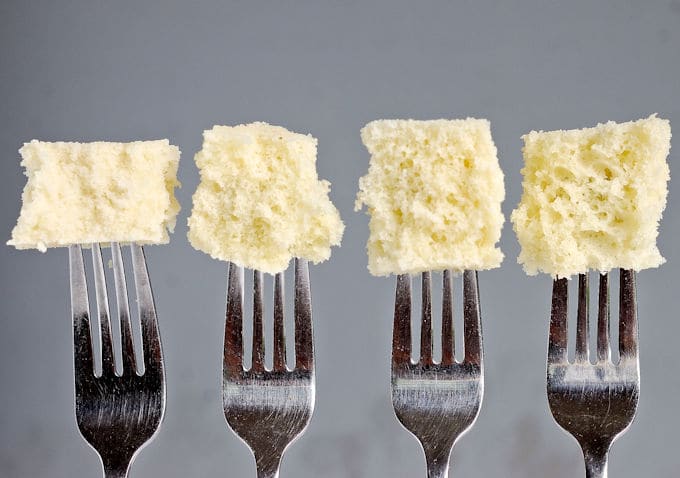
With the four ingredients sorted, it’s time to start assembling the cake batter in the so-called creaming method. Creaming involves beating butter and sugar till the mixture turns light and fluffy, and it is absolutely crucial that the butter is pliable for creaming to occur properly. During creaming, the jagged crystals of sugar punch tiny air pockets into the pliable butter, before dissolving away into the water phase of the butter emulsion. These air bubbles form the foundation for the rise of the cake in the oven, along with other optional reinforcements like whipped egg whites and baking soda. During creaming, the mixture turns pale and fluffs up thanks to all the air.

There’s another method of assembling the batter called reverse creaming, which involves adding all the dry ingredients into the bowl first, and adding in the fat which then coats the flour, arresting gluten formation. The liquid ingredients go in at the very end. This results in a cake with a very plush, tender crumb, much softer than you would get with creaming. However, due to the absence of creaming, very little air is incorporated, leading to a flat top, ideal for layer cakes. For a good old pound cake with a domed top, the creaming method works just fine.
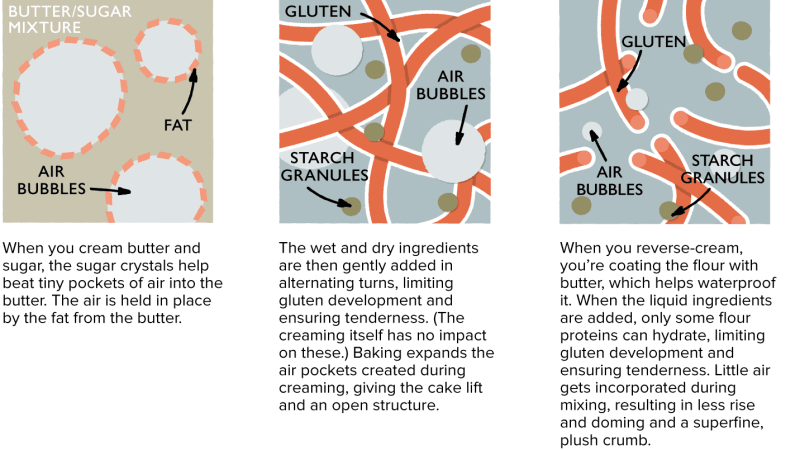
Anyways, back to our classic creaming technique. When all the sugar has dissolved in the butter and the mixture doesn’t feel gritty between the fingers, the eggs are added gradually and the batter mixed till homogenous. This is followed by the addition of flour, which will bring the runny liquid together into a thick batter. This is also the time to add any additional flavourings. With the batter properly mixed and ensuring that there are no large lumps of flour left, the batter is ready to be poured into tins and baked. The oven tempeature is crucial : too high and the top cooks much faster than the middle; too low and you run the risk of not getting any browning at all.

“As the batter heats up, the air and all those microscopic bubbles expand, forcing the batter to rise. At round 140 degrees, water vapour forms, expanding the bubbles even further. Then at 180, give or take a degree or two, starches swell and undergo gelation, that is they form gels, that’s what starches do. Soon after, the proteins coagulate forming the lattice like structure around the bubbles. Final step is of course browning which doesn’t set it until around 200 degrees. At this point enough moisture has been driven out or absorbed that the sugars at the surface can caramelize and the proteins can undergo the Maillard reactions. In other words, the crust is golden brown and delicious.”
Alton Brown, Good Eats
It takes just a few, glorious steps to transform this basic pound cake into a Christmas fruitcake. Join us on Christmas day as we delve into the depths of the origins of the Christmas cake, its advent and spread in India, where to buy it and how to make it.

One Comment Add yours